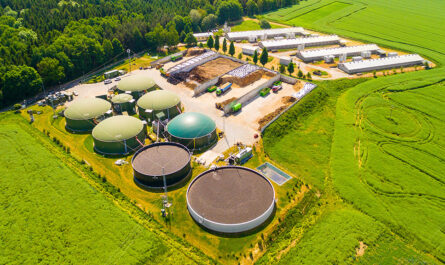The Rise of LNG as a Marine Fuel: LNG Bunkering Operations and Infrastructure
The use of liquefied natural gas (LNG) as a marine fuel is growing rapidly owing to stricter environmental regulations. Shipping companies are increasingly adopting LNG to power their vessels as it can help reduce emissions significantly compared to conventional fuels like heavy fuel oil. This transition requires the development of supporting infrastructure for LNG Bunkering or refueling operations.
LNG Bunkering involves the transfer of liquefied natural gas from an LNG bunker vessel or terminal to the fuel tanks of recipient ships. As the LNG needs to be transported and handled at cryogenic temperatures of around -162°C, special precautions and safety measures must be followed. Only specially designed bunker vessels and recipient ships with double hulls and cryogenic piping systems can be used. Extensive risk assessment and approval from maritime authorities is also required before commencing any refueling operations activity.
Regulatory Harmonization for LNG Bunkering
With the growing interest in LNG as a marine fuel, international regulatory bodies like the International Maritime Organization (IMO) are working to develop a comprehensive set of regulations for refueling operations operations. Currently, different countries and ports follow their own sets of rules which can create confusion. IMO aims to release an internationally agreed LNG Bunkering code by 2025 to harmonize standards globally. This will provide clarity to all stakeholders and boost confidence in LNG as a commodity for maritime trade. The code will address topics like personnel training, ship-to-ship transfer procedures, safety zones and emergency response requirements.
Storage and Distribution Infrastructure Development
Most ports catering to large volumes of container or crude oil ship traffic are investing in development of refueling operations infrastructure. This involves setting up dedicated LNG terminals with storage tanks to offer refueling services. Some common infrastructure models include installation of floating storage units near ports, development of truck-to-ship bunkering and using pipelines to transport LNG from onshore terminals to bunker vessels. Countries with natural gas reserves are focusing on developing shipping routes and bunker vessels to distribute LNG across their coastal waters and nearby territories. As the LNG fuel market expands, global suppliers are also exploring cross-border bunkering cooperation between ports in different regions.
Pioneering LNG Bunkering Projects
Several pioneering projects around the world are helping demonstrate viable models for scaling up refueling operations operations. Northern European ports have emerged as early adopters with projects in Rotterdam, Zeebrugge and Gothenburg. Korea has ambitious plans to commercialize LNG fueled ships and is spearheading the construction of specialized LNG Bunkering vessels. Singapore is developing an refueling operations hub in conjunction with Petronas of Malaysia. Parts of US and Australia are also conducting trials to establish standardized procedures. First commercial LNG ship-to-ship bunkering was done at Port of Skogn, Norway in 2017. Successful projects are validating the safety, efficiency and environmental benefits of LNG as a marine fuel when proper infrastructure is available.
Challenges in Establishing LNG Bunkering Networks
While the potential of LNG looks very promising, some challenges still need to be addressed for wider commercialization. Developing shoreside infrastructure requires huge capital investments and space may not always be available in busy ports. Similarly, purpose-built refueling operations vessels are much more costly than conventional tankers. Coordination is required between maritime authorities, port operators, terminal owners and fuel suppliers for an integrated value chain to emerge. As the LNG bunker market is still nascent, achieving economies of scale will take time. Remote coastal and island locations may find LNG supply difficult. Standardization of technical specifications and commercial models globally will help increase confidence in cross-border bunkering operations. Recruiting trained personnel familiar with cryogenic cargo handling also presents a challenge initially. Overcoming bottlenecks in a well-coordinated manner will be key to accelerate LNG adoption.
Conclusion
With IMO regulations driving the need for cleaner marine fuels, LNG is gaining serious traction as a viable, commercially viable and more environmentally friendly option compared to traditional bunker fuels. Early pioneering projects demonstrate that safe and reliable LNG Bunkering networks can indeed be developed with the right infrastructure, trained manpower and regulations. While scaling up will require coordinated investments and efforts from across the energy value chain, the inherent advantages of LNG should help address current challenges over time. Wider availability of LNG as a marine fuel could significantly reduce emissions from international shipping in the coming decades.
*Note:
1.Source: Coherent Market Insights, Public sources, Desk research
2.We have leveraged AI tools to mine information and compile it




